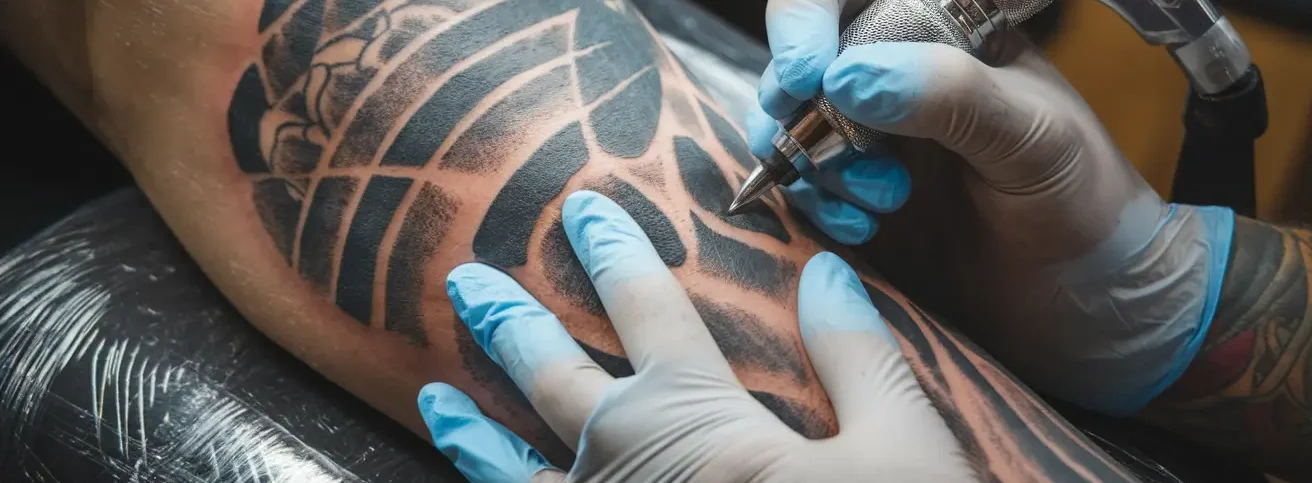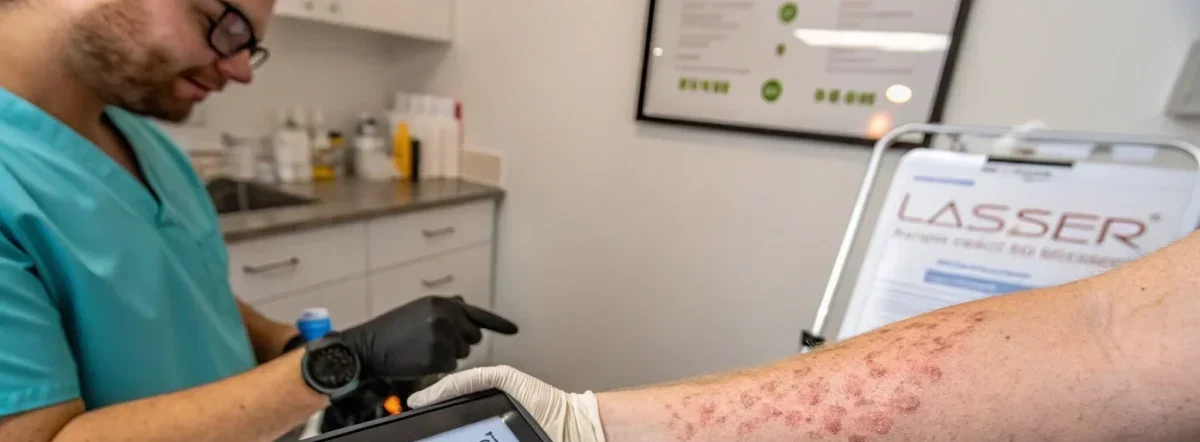It’s a cool autumn afternoon, and I’m nestled in my cozy home office, overlooking the backyard where my golden retriever, Bailey, playfully chases falling leaves. This time of year always reminds me of transformation, a theme that resonates deeply in my work helping patients rewrite their skin stories. As a dermatologist specializing in laser tattoo removal, I’ve seen a wide spectrum of individuals seek second chances on their skin. For many, the decision isn’t without its fair share of worries about laser tattoo removal risks and warnings. Navigating these risks can feel like charting unknown territory—much like picking up an untouched paintbrush in my weekend hobby. If you’re contemplating this path, knowing what lies ahead can make all the difference. 🌿
Why Laser Tattoo Removal Risks and Warnings Matter
The demand for laser tattoo removal has surged over the past decade. As societal norms shift and personal stories evolve, the realization that tattoos may no longer fit one’s life narrative has become more common. But while this transformative procedure can offer a fresh start, it comes with its own set of apprehensions—largely due to risks such as skin damage, scarring, and pigmentation changes. Understanding these risks isn’t just about being informed; it’s about feeling empowered to make choices that reflect who you are today.
What Exactly Are Laser Tattoo Removal Risks and Warnings?
Laser tattoo removal is a medical procedure that uses high-intensity laser beams to break down the pigments in tattoos. These laser beams are specifically designed to target only tattoo ink, minimizing damage to surrounding skin. Compared to traditional removal methods like dermabrasion or excision, laser treatment is generally less invasive and more precise. However, it’s not without potential side effects. Common laser tattoo removal risks and warnings include temporary changes in skin color, possible infection at the removal site, and minor scarring. It’s important to weigh these alongside the benefits of the procedure, much like I weigh the joy of vibrant colors against the challenge of learning new techniques in my painting projects.
Understanding the Risks: A Closer Look
Skin Reactions
- Hyperpigmentation: This is where your skin may darken temporarily post-treatment. As someone who often enjoys hiking coastal trails with my family, I’ve learned just how unique our skin can react to sun exposure—laser treatments are no different.
- Hypopigmentation: Conversely, your skin may lighten. This can be particularly noticeable in diverse skin tones, necessitating a careful approach.
Scarring and Texture Changes
- Infection Risks: As with any procedure that involves skin disruption, there is a slight risk of infection if post-care protocols aren’t meticulously followed.
- Scarring Potential: Though rare with laser treatments, there’s always a possibility, especially if the skin’s response is unpredictable—something I liken to that one stubborn screw in a vintage chair during furniture restoration!
Emotional and Financial Considerations
- Emotional Journey: Engaging in tattoo removal is not just a physical process. It’s an emotional one too, filled with the hope of starting anew.
- Cost Implications: Quality laser treatments can be pricey and may require multiple sessions for desired results, much like investment pieces in my art collection.
Understanding these aspects can help prepare you for the journey ahead.
Hello, I’m Dr. Emily Carter, a board-certified dermatologist with over 12 years of experience in laser tattoo removal based in San Diego, California. My goal is to provide compassionate care and help patients achieve their personal transformation goals, underlined by a deep belief that everyone deserves second chances. When I’m not working, I enjoy painting, exploring nature with my family, and finding beauty in restoring vintage furniture. ❤️
Understanding Laser Tattoo Removal Risks and Warnings
Laser tattoo removal has become a popular choice for those eager to erase inked stories from their skin. Despite its promise, like many medical procedures, it comes with its own set of risks and warnings that are vital to consider. I vividly remember Sarah, a courageous client who sought to remove a tattoo reminding her of a past she wished to forget. Her journey highlighted the importance of understanding these risks to make informed decisions.
How Laser Tattoo Removal Works: A Step-by-Step Explanation
Laser tattoo removal is a precise process, harnessing the power of light to break down tattoo pigments that the body can then absorb. First, you’ll sit for a consultation where we assess your skin and the tattoo. Then, during each session, a concentrated laser beam targets the ink under your skin. Some clients describe the sensation as similar to a rubber band snapping against the skin, while others might feel a bit more discomfort, particularly in sensitive areas.
Throughout the process, patience is crucial. Sessions are spread out over weeks or months, allowing the body time to process the ink fragments. And remember, each tattoo’s journey to removal is unique, much like your story.
Factors That Influence Results
- Personal Factors: Your age, skin tone, immune response, and even your lifestyle habits like smoking can influence results.
- External Factors: The type of clinic technology used, the expertise of the technician, and the frequency of your sessions all play a role in how successful the removal will be.
Common Misconceptions About Laser Tattoo Removal Risks and Warnings
Let’s clear the air on a few myths. 🤔 First, it’s a misconception that one session will completely remove a tattoo; in reality, multiple sessions are usually needed. Second, while some fear the procedure as unbearably painful, many find it tolerable and less severe than expected. And finally, contrary to popular belief, not all ink colors are equally challenging to remove. Black is typically the easiest, while colors like green or blue require more patience.
Potential Side Effects or Considerations
As with any cosmetic procedure, there are potential side effects. You might experience slight redness, swelling, or even blistering post-treatment, but these effects are typically temporary. To minimize risks, adhere to pre-treatment advice, such as avoiding sun exposure and following post-care instructions diligently. Always communicate openly with your dermatologist about any concerns you have. Trust me, as a mother of two active kids, Olivia and Lucas, I understand the need for a straightforward, safe approach to skincare.
Finding solace in nature, be it through hiking or painting, I’ve learned that everyone deserves a second chance—whether it’s taking on a new art project, like restoring vintage furniture, or giving your skin a fresh start.
My golden retriever, Bailey, serves as a daily reminder of resilience and joy, which I hope resonates with each person who undertakes this journey of renewal.
Wishing you courage and clarity on your path to rewriting your skin’s story, one laser session at a time. 🌟
Author’s Note: As Dr. Emily Carter, I bring over 12 years of dermatology expertise to help clients safely and effectively navigate their tattoo removal journeys. My practice in San Diego thrives on a foundation of compassion, innovation, and the belief in second chances.
The Journey to a Blank Canvas: Understanding Laser Tattoo Removal Risks and Warnings
Every tattoo tells a story—of love, rebellion, or a moment in time. But sometimes, as we grow, our stories change. As a dermatologist specializing in laser tattoo removal here in sunny San Diego, I often meet folks longing for a clean slate, eager to rewrite their skin stories. While laser tattoo removal offers a promising path, it’s essential to be aware of the risks and warnings involved. Allow me to shine a light on these considerations with both my professional insights and a touch of personal reflection.
The Science Behind the Beam
The technology of laser tattoo removal is marvelously sophisticated. Lasers emit short pulses of light energy, which break down the ink particles, allowing your body’s immune system to clear them away naturally. However, with every reward comes potential risks.
- Skin Sensitivity: Post-treatment, your skin may be tender or slightly red, akin to a mild sunburn. My own daughter, Olivia, once had a small rash that turned bright pink, so I understand the worry redness can bring. 😊
- Scarring: There’s a possibility of scarring, especially if the aftercare instructions aren’t followed meticulously. This is why I often stress the importance of nurturing your skin after every session.
- Hyperpigmentation: This involves the darkening of the treated area. On the flip side, hypopigmentation, or lightening of the skin, can also occur, especially among those with darker skin tones.
The Importance of Choosing the Right Clinic
After countless consultations, I’ve found that the key to a successful tattoo removal lies in choosing the right clinic. Here are some vital factors to consider:
- Qualified Professionals: Always ensure your practitioner is certified and experienced, much like how my husband David meticulously chooses the right type of canvas for his graphic design projects.
- Clinical Environment: The setting should be sterile and professional, much like the precision of my paintbrush strokes when I restore vintage furniture.
- Comprehensive Consultation: A thorough consultation is non-negotiable. It’s your opportunity to ask questions, discuss concerns, and understand the process entirely.
Real Experiences: What People Say
A patient named Sarah once shared her journey—determined to erase a youthful mistake. She appreciated transparency about the potential pain and took comfort in the supportive care throughout the process. Others have noted the empowerment they felt in reclaiming their skin, though occasionally needing a little patience along the road.
FAQs About Laser Tattoo Removal Risks and Warnings
Will laser tattoo removal damage my skin permanently?
Mostly no, but there is a slight risk of scarring or pigment changes. Following post-care instructions meticulously can mitigate these risks.
Is the procedure painful?
Pain is subjective, but it often feels like a rubber band snapping against the skin. An expert clinic will offer numbing options to manage discomfort.
Can all tattoos be entirely removed?
Some colors, like green and yellow ink, can be more challenging to remove completely. However, significant fading can be achieved with the right technology and expertise.
Emily’s Note
As someone who cherishes second chances—whether it’s restoring antiques or offering fresh starts to skin stories—I recommend taking the time to research and reflect before deciding on tattoo removal. I always say to my kids, Olivia and Lucas, that asking questions is a superpower. Apply this rule to consultations, and you might save yourself months of regret.
Final Thoughts
Our stories are meant to evolve, and laser tattoo removal can be an empowering step in embracing that evolution. While it is essential to be informed about the risks and warnings, I want you to hold onto the hope that comes with a fresh beginning. If you’re considering this journey, consult with an expert today to explore how you can pave a new path for your skin. Remember, every ending is but a new beginning. 🌟







